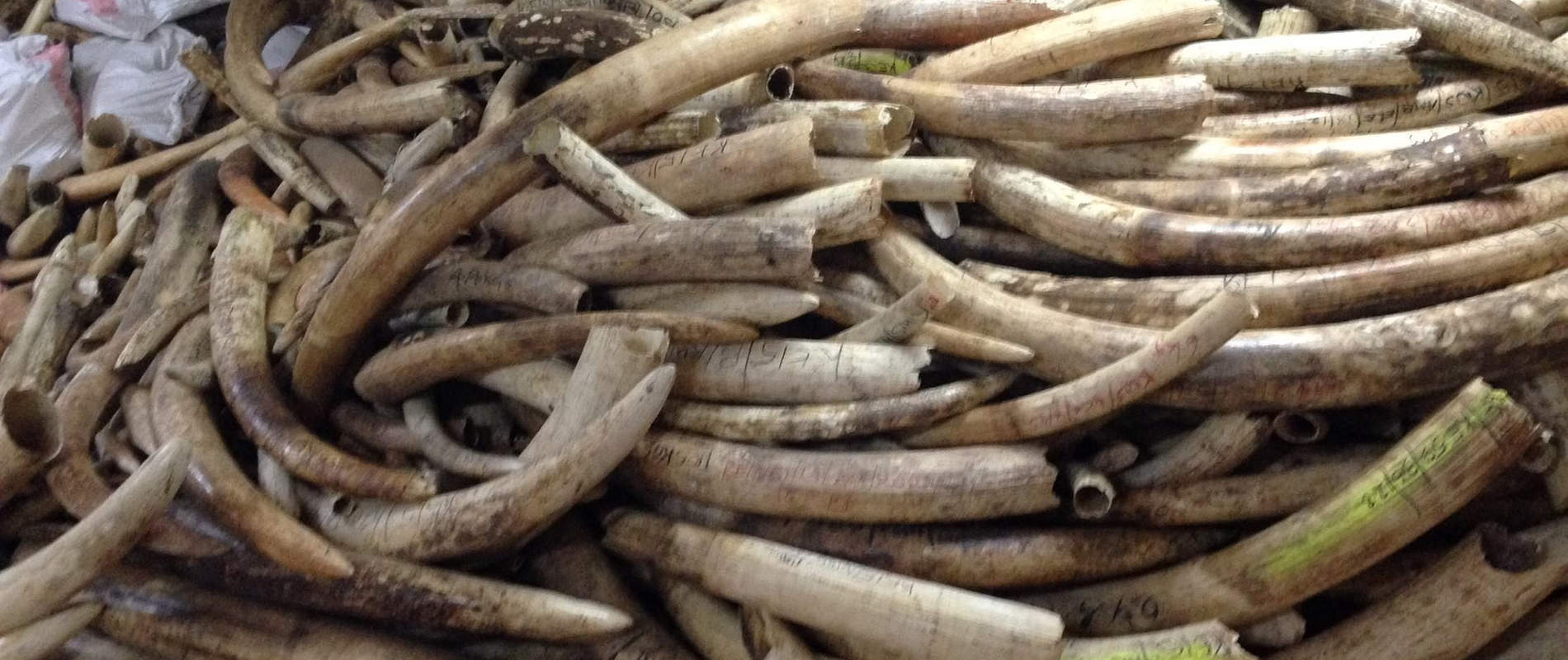On April 30th in a ceremony organised by the Government of Kenya and the Kenya Wildlife Service, up to 105 tonnes of Ivory, the largest stockpile ever destroyed and currently under round-the-clock armed guard in Nairobi, will go up in flames
On April 30th in a ceremony organised by the Government of Kenya and the Kenya Wildlife Service, up to 105 tonnes of Ivory, the largest stockpile ever destroyed and currently under round-the-clock armed guard in Nairobi, will go up in flames. An additional 1.5 tonnes of rhino horn, Kenya’s entire stockpile, will be destroyed simultaneously. Kenya’s environment secretary, Professor Judi Wakhungu, said, “Kenya is once again boldly leading the way by demonstrating ivory must be put beyond economic use by burning our stockpile. [The burn] is evidence of our zero tolerance approach towards poaching and illegal wildlife trade. Kenya’s wildlife is a major contributor to not only our economic wealth but also our national pride and heritage. The time to ensure its preservation is now.” The ceremony will follow The Giants Club Summit on 29th April, a historic gathering of African heads of state dedicated to averting the elephant poaching crisis, and it signals Kenya’s commitment to ending the blight of poaching. National leaders invited to attend include the presidents of Liberia, Chad and Tanzania and the prime minister of Ethiopia. The Summit is especially significant as it will be the first time African heads of state will have met on African soil with the express intent of saving their continent’s elephants.





Many around the world might question why burn Ivory at all? The most significant reason is the powerful imagery and symbolism attached to a burning pyre of Ivory, ricocheted around the world to draw attention to the crisis and alarm consumers enough to stop buying Ivory at all. Once the decision has been made to destroy the Ivory, worth millions of dollars on the black market, burning it is seen as a fast and ultimate way of disposing of such an item that is extremely costly to guard 24 hours a day. Other countries, concerned about the definitive destruction of Ivory by burning it, have opted for ‘Ivory Crushes’ instead. Prolonged exposure to extremely high temperatures is needed to ensure total destruction of Ivory and the Kenya Wildlife Service will continue to burn the stockpile in specially built furnaces for at least a week after the dignitaries, heads of state and celebrities have left in order to dispose of it.




The first Ivory burn was conducted in July 1989 by President Daniel Arap Moi of Kenya who presided over the burning of 12 tonnes of Ivory in Nairobi National Park in a measure meant to send a critical message to the world. After that ceremony, the trade of Ivory was banned under the Convention on International Trade in Endangered Species. Some argue that burning Ivory stockpiles reduces supply and increases the value of ivory already in circulation. However the act of seizing the Ivory is what removes it from circulation in the first place and so any market effect would be felt at that point. Closing Ivory markets, demand reduction programs in existing Ivory consumer countries and enhanced security at a field level is intended to stop the poaching of elephants. The aim is to make this ‘commodity’ valueless, not priceless, and thus all other countries around the world should follow suit in destroying their stockpiles of ivory too. The Giants Club was founded by the presidents of Botswana, Gabon, Kenya and Uganda, with support from Space for Giants and its patron, Evgeny Lebedev, the owner of The Independent and Evening Standard newspapers. Its objective is to bring together business leaders, politicians and philanthropists to provide the political will and financial resources to secure Africa’s remaining elephant populations and the landscapes on which they depend.
It’s hard to fathom the wanton slaughter that Kenya’s stockpile of Ivory represents. For every pair of tusks accounted for, an elephant died a violent death and any dependants on one individual would have quickly followed suit. The world’s elephants face a perilous future and unless we act now this iconic species will be extinct within the next few decades, at our judgment. This historic gathering of business leaders, conservationists and heads of state followed by the symbolic destruction of Kenya’s Ivory will mark the next real tangible step in securing a future for Africa’s elephants. You can find out more about the DSWT’s efforts to save elephants on our website and through our iworry campaign











